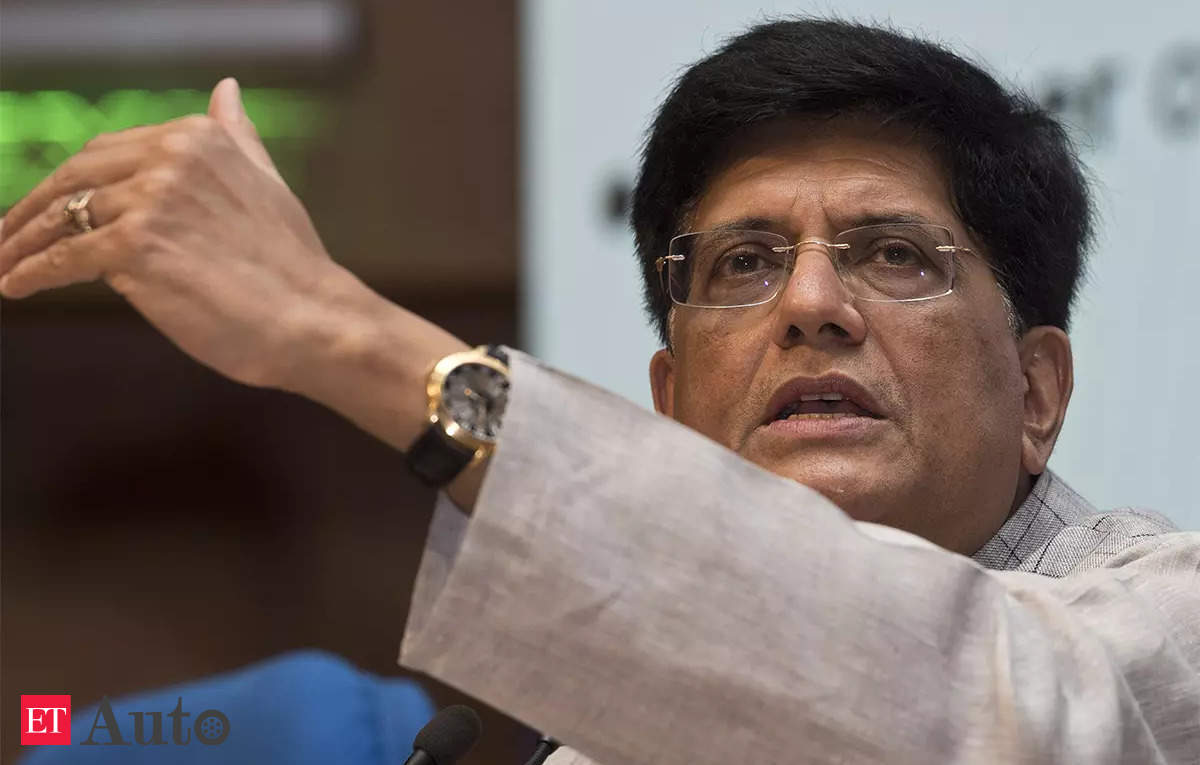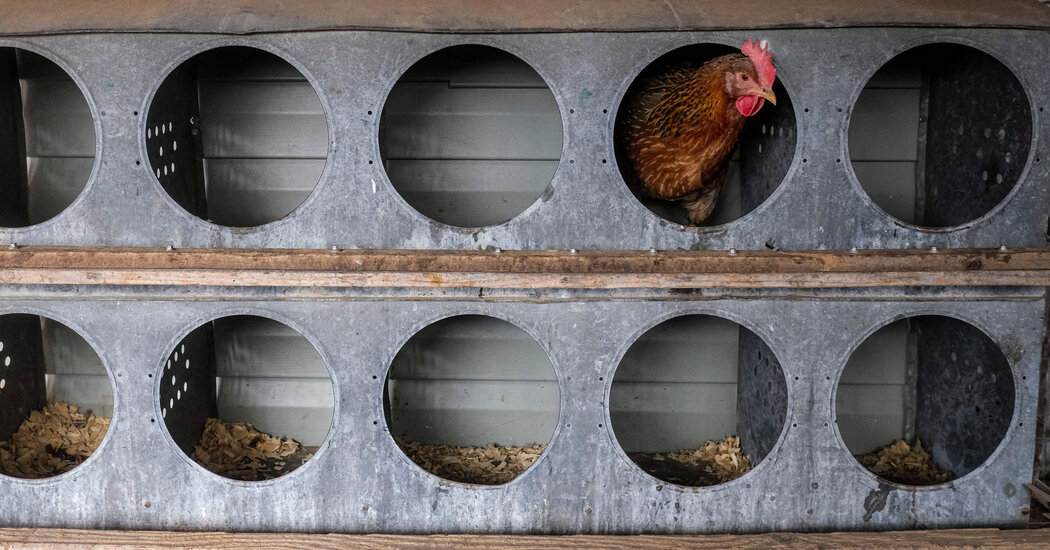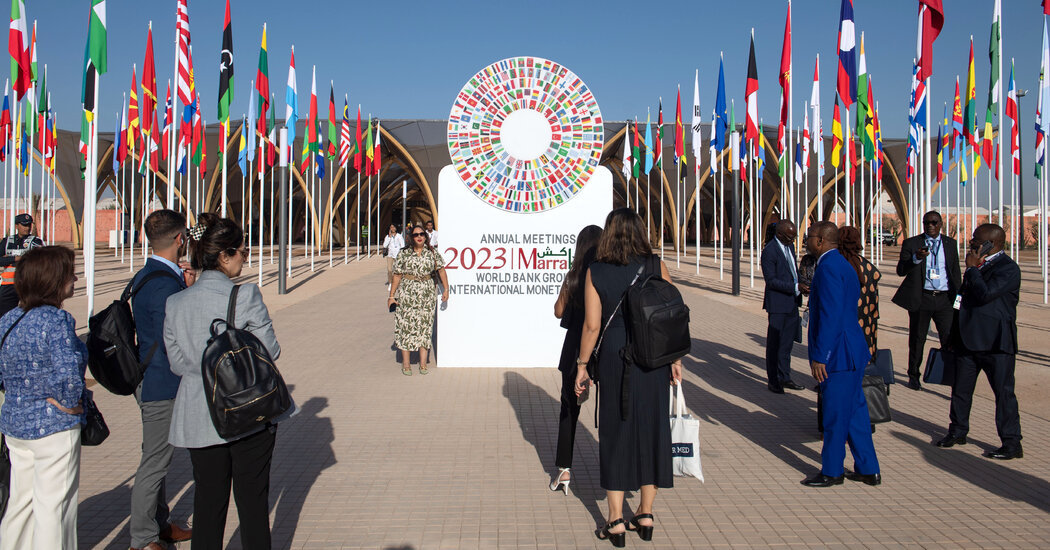This article is part of our special section on the Climate Forward event that will include policy and climate leaders from around the world.
The Resource Recovery Room beneath Mercedes-Benz Stadium was humming with activity one afternoon last month. Workers fed food into a compactor for compostable material, aluminum cans into another compactor and tossed other items into a variety of recycling bins.
It was messy work but a critical part of the stadium’s ambitious effort to steer more than 90 percent of its waste away from landfills. Critical because recycling and composting help reduce harmful greenhouse gas emissions and ambitious because the two-million-square-foot stadium each year welcomes an average of three million visitors and produces more than four million pounds of waste.
“We’re making sure that we’re not only diverting at the highest level possible,” said Andrew Bohenko, who oversees the sustainable initiatives at the stadium, which hosts the N.F.L.’s Atlanta Falcons, M.L.S.’s Atlanta United and hundreds of events, but also insuring “that we’re getting multiple reuses out of the materials that we have in the stadium.”
Diverting tons of waste from landfills is next-level stuff for one of the country’s greenest stadiums. The $1.6 billion building was an environmental trendsetter when it opened in 2017 as the first stadium in the United States to win Leadership in Energy and Environmental Design (LEED) platinum certification from the United States Green Building Council, which grades sustainable design and energy efficiency.
To win that designation, the stadium was located near ample public transportation, was built with locally sourced and recycled materials and included a 20-foot-high cistern that holds up to 680,000 gallons of rainwater that is used to irrigate the vegetation around the building and reduce flooding nearby.
But Arthur Blank, a co-founder of Home Depot, whose company owns the teams and operates the stadium, wanted the building to run as sustainably as possible, too, which meant reducing as much waste as possible. The 6,000-square-foot Resource Recovery Room was created so dozens of workers could sort compost and recyclables like cardboard and metals into compactors and balers.
Mr. Bohenko and his team partnered with recyclers, garbage haulers and environmental groups, which remove 14 types of recyclable and compostable waste. They pushed vendors to eliminate nonrecyclable material in their packaging and placed clearly marked bins — one for compost, another for recyclables — throughout the building.
In January, the 75,000-seat stadium was deemed a zero waste facility by Green Business Certification Inc., a first for a venue of its size. This year, the stadium expects to spend a net $400,000, or about 13 cents per visitor, to compost and recycle 2,000 tons of waste. But as the staff (and fans) become more efficient at collecting, sorting and recycling, the price should fall.
Waste and emissions at sports venues is a fraction of those produced by the mining, transportation or construction industries, to name a few. But teams and stadiums are the country’s social commons where people of all ages and backgrounds meet. That gives venue operators a platform to push their priorities, including the need for sustainable practices.
“We bring people together and give them a good time, and then talk about topics in a nonpolitical way,” said Dietmar Exler, the stadium’s chief operating officer. “We have a tremendous opportunity, much bigger than we think.”
To their surprise, Mr. Exler and Mr. Bohenko found that their message has easily dovetailed with the priorities of fans and customers who visit Mercedes-Benz Stadium. Suite holders have been asking for green amenities like compost bins. Young fans are educating their elders on how to separate their waste and taking tours of the stadium that highlight the venue’s sustainability practices.
“Sports organizations are attentive to their social licenses to operate and that includes climate action,” said Allen Hershkowitz, a founding director of Sport and Sustainability International, which advises leagues, teams and venue operators throughout the world. “Fans expect their teams to be environmentally responsible.”
More than 200 teams, leagues and organizations globally have signed on to the United Nations Sports for Climate Action framework, which includes commitments to halve their greenhouse gas emissions by 2030. Reducing emissions is one of the topics that will be discussed by leaders in business, science, and public policy at The New York Times Climate Forward event on Thursday.
Meeting these goals is complex because of the difficulty of finding clean sources of energy, adequate recyclers and eco-friendly suppliers. For Hattie Park, the sustainability manager at the All England Club, which hosts Wimbledon, reducing the amount of plastics is a big challenge.
Single-use plastic bottles have been largely scrapped and more than 100 water- refilling stations were added for fans who brought their own bottles. Players at Centre Court must use refillable bottles, too.
Drinks are served in reusable cups, which can withstand at least a dozen or more washings, eliminating 500,000 disposable cups and lids each tournament. Customers pay a 1 pound ($1.25) deposit for a cup, and if they return it, they can get the money back or donate the funds to the Wimbledon charitable foundation, which has received more than £130,000 so far.
The racket strings discarded by the players are recycled and made into countertops for tables used at the tournament.
“Doing the small things, it all adds up,” Ms. Park said. “It’s about finding a use for all these complicated waste streams.”
Older building like those at Wimbledon present unique challenges. In Seattle, Climate Pledge Arena, which opened in 2021 after an extensive renovation, is constrained by its modest footprint. The arena’s name comes from the commitment created by Amazon and Global Optimism for companies to reach net-zero carbon emissions by 2040.
The arena diverts more than 90 percent of its waste from landfills in part by eliminating single-use plastics and buying compostable trays and other items. During events staff separate recyclables and compost in a small sorting room, and when events end items are separated by staff during cleanup before they reach the room.
“It’s procurement on the front end and process on the back end,” said Rob Johnson, the head of sustainability for the N.H.L.’s Seattle Kraken, the building’s main tenant, along with the W.N.B.A.’s Seattle Storm. “Once you set a course and vision, you have to get a little creative.”
Venue operators are now sharing best practices to reduce energy use and waste. Jason McLennan, who helped Climate Pledge Arena reach LEED status, helped set up Green Operations & Advanced Leadership, or GOAL, so arena and stadiums can share data and learn to reduce their energy and water bills.
The team at Mercedes-Benz Stadium created its own zero waste playbook, as well, to provide a road map for diverting waste from landfills by increasing composting and recycling.
“We want to show that we can operate this and make a business case for anybody,” Mr. Bohenko said. “It’s all attainable wherever you are. You just have to take what you have at your disposal and use that.”
The United States Tennis Association, which runs the U.S. Open, followed that approach when a company in Delaware that accepted compostable forks, knives and other utensils used at the tournament closed. The materials, which are separated from other compostables like food scraps, are now sent to a waste-to-energy facility in Westbury, N.Y.
Since 2008, nearly 900 tons of food waste has been sent to compost farms and another 215 tons of unspoiled food has been donated to local communities.
Sponsors at the Open have also gotten involved. Wilson, which provides tennis balls, now ships them in cans with four balls instead of three, with no label and a special cap to reduce the amount of plastic.
“Partners and sponsors care what they are investing in,” said Lauren Tracy, the senior director for strategic and business operations at the U.S.T.A. “It needs to be a priority for everyone on this round earth, whether you play tennis or not.”











